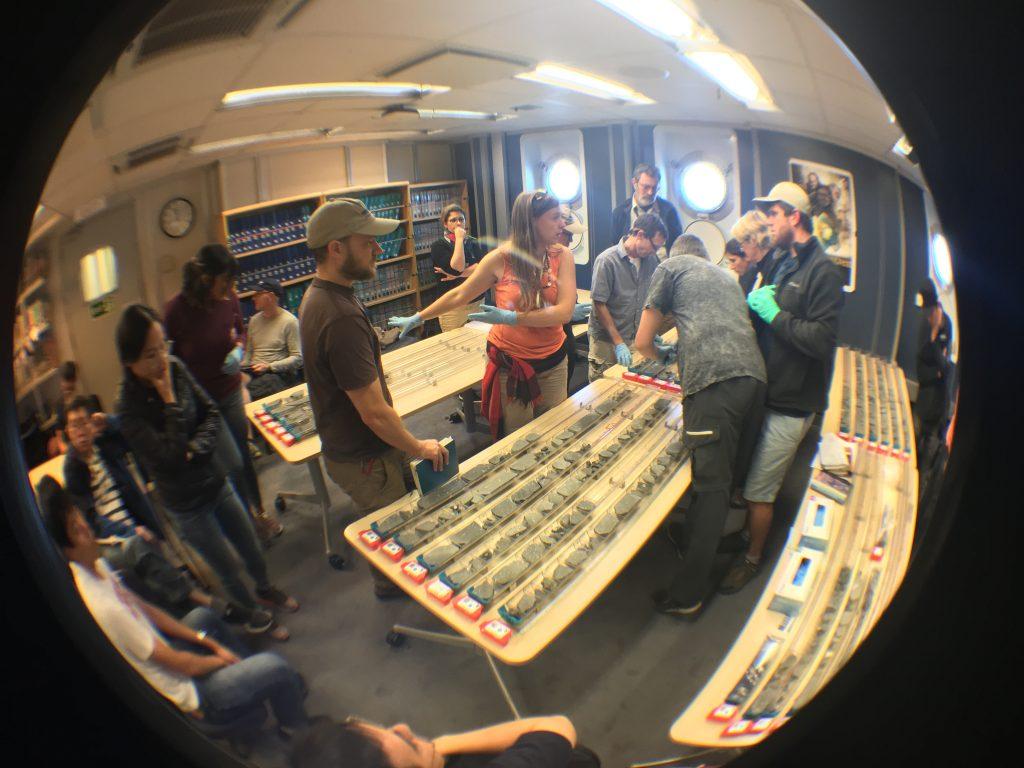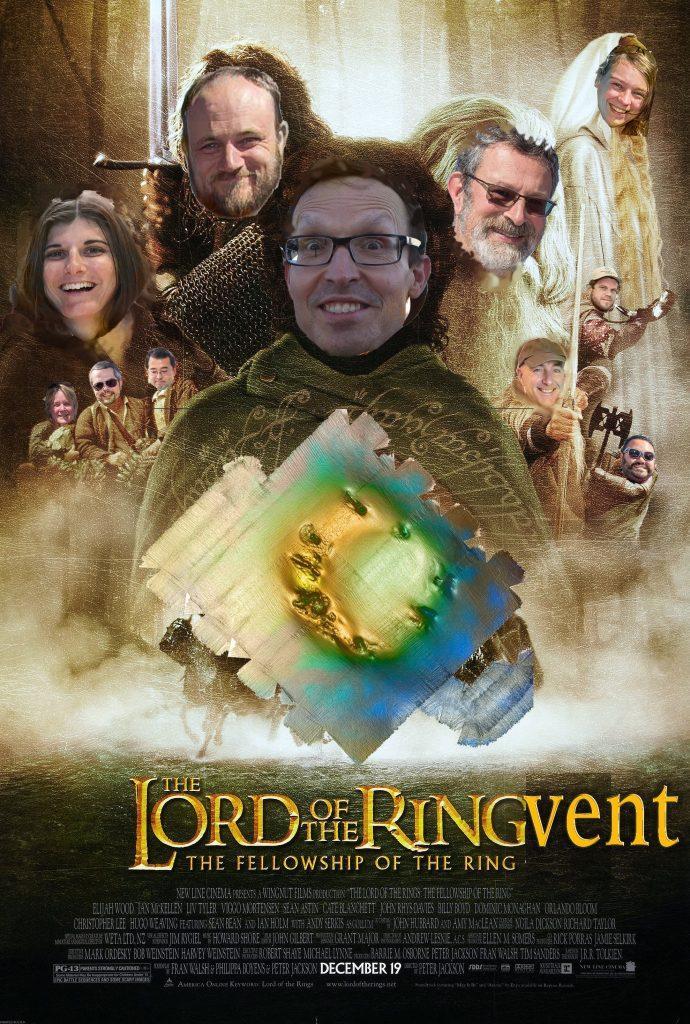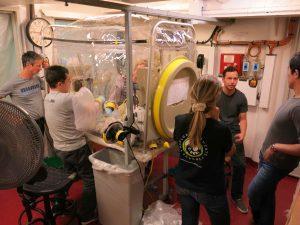
The Fellowship of the Ringvent and the Mines of Moria
Ringvent does something to the science crew… it has a peculiar effect… normally sane people say, “I can spend even more days here!”, and willingly submit to its power… so, here is the poster.

Ringvent bearer Dan Lizarralde is Frodo, naturally; the shining knight of petrophysics Christophe Galerne appears as Aragorn, inorganic geochemist Lucie Pastor plays Arwen, your blogger appears as Gandalf and paleomagnetist sorceress Louise Koornneef shines as Galadriel. There is the irresistible fun combo of sedimentologist Ivano Aiello as Legolas (a natural fit!), outreach officer Rodrigo Pérez Ortega as Gimli (with handsome double axe), and heat flow guru Florian Neumann as Boromir (hopefully not marked for early death, we need him!). On the left, Merry & Pippin are represented by microbiologists Virginia Edgcomb and Yuki Morono, and — between them — shipboard project manager Tobias Höfig stars as Sam Gamgee. And the ring holds us all. The poster has been lovingly prepared by Rodrigo. It will become a hot collectors item!

The Ringvent fellowship stages a special reception in the conference room, where the sill cores of Hole 1547B are displayed for the first time all together in their full splendor, to aid their core description by making them accessible in context.
Most reader’s favorite in “The Fellowship of the Ring” are the Mines of Moria, where the dwarves have toiled eons ago to extract mithril from their samples, only to come to an untimely end when they woke up the Balrog and other unpleasant critters. We try to do the former without the latter. The anaerobic glove box is set up for rock chiseling, and chisel Meister Virginia Edgcomb (who learned the craft on the Indian Ocean “drill to the mantle” IDOP Expedition 360] is in charge of sample extraction.

Hammers, chisels, a steel cutting plate, and whirl pack bags to catch the rock splinters, are set up in the glove box. The rock samples are first split into hockey pucks, and then each puck has its outer rim chiseled off.
Yuki is holding a hockey puck and Ginny is cutting off the outer contaminated zone with well-aimed strokers. The splinters are kept for other analyses that do not require contamination-free samples, i.e. pieces that have been exposed to seawater and drilling fluid. The whirl pack bag is changed frequently and the cutting platform [barely visible by its green rim] is rinsed often with ethanol to keep contamination by the seawater-exposed surface pieces under control.

Processing a sample set takes a while! Spectators drift into the deep mine shafts to witness the battle. They will receive their samples, nice sterile bags with rock chunks, with instructions how to crush them further and how to make a smooth rock slurry for cultivation and enrichment of rock microbes.
This blog post first appeared on Oct. 24 on my daily blog of EXP385. Make sure to go to expedition385.wordpress.com to read the latest updates of this expedition!